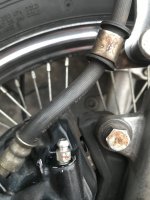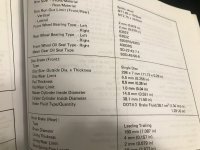(1) It's a good possibility the nipple is pitted from corrosion and breaking it loose to bleed broke all the corrosion loose. You can get a new bleeder nipple at about any parts store.... 6mm I think... someone double check me on that. It'll get a bit messy replacing it, so have plenty of rags on hand.
Try less... just a hair to 1/8 turn backing off. Then take the rest out at the perch. You'll know when you've gone too far, the clutch will start slipping. Just back the perch off a hair if it does.....with fanning the clutch through the freeplay and then backing it off about a 1/4 turn
Last edited:



